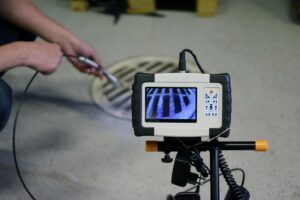Thank You for Choosing EnviroTech Pros!
Home » Thank You
We will be in touch shortly to learn about your project goals and details. In the meantime, explore our recent blog posts and FAQs!

Should You Get Your Air Quality Tested?
Should You Get Your Air Quality Tested? Air quality is a growing concern in our modern world, and there are many ways that you can

6 Most Common Issues Found During a Home Inspection
Wondering what issues are commonly found during home inspections? Here’s a list of the top 6! Home inspections are a critical part of the home-buying

What Home Inspectors Look for in a Kitchen
Inspectors have a checklist of the things they check. Take a look at what exactly they look for while they’re in your kitchen! As the
While you wait...
READ OUR LATEST BLOG POSTS
EnviroTech Pros strives to be your local source for industry updates, event info, and tips & tricks! Read our latest blog posts to learn more about home inspections and how you can make the most of your upcoming project with us.
While you wait...
FREQUENTLY ASKED QUESTIONS
For many people, the purchase of a home is the largest investment they will ever make. Therefore, it is important to have the home visually inspected inside and outside for potentially costly defects. The inspection is thorough, but is not technically exhaustive as it is only visual.
The average on-site inspection time for a single inspector is two to three hours for a typical single-family house; anything significantly less may not be enough time to perform a thorough inspection. Additional inspectors may be brought in for very large properties and buildings.
Yes! In most cases, you will receive the report within 24 hours of the date of inspection.
No. The inspection report is first and foremost, an information tool. Items in need of repair may either be accepted “as-is” or negotiated between the buyer and seller, depending on the terms set out in the sales contract.
The buyer is responsible for the fee and it is due ahead of the inspection appointment.
The home buyer selects the inspector. Choosing the time and date of the inspection may be done by you or by an authorized agent. You may also visit our scheduling page to schedule a home inspection online.
Yes! All utilities must be turned on prior to the inspector’s arrival, as the inspection cannot be thoroughly completed if they are not. This will also result in an additional return visit fee. Your agent can arrange for the utilities to be turned on if they are not already.
Radon is a radioactive gas that forms naturally from the decay of uranium in soil, rock, and water. It can’t be seen, smelled, or tasted. Radon can enter your home through cracks in the foundation, wall joints, gaps around pipes and wiring, or other openings. Once inside your home, it can accumulate to high levels if not properly mitigated.
There are two common methods for measuring indoor radon levels: short–term tests and long–term tests. Short–term tests typically last 2 to 7 days while long–term tests last from 3 months to 1 year. There are also passive devices that measure cumulative exposure over time. Whichever type of test you choose, it should be accredited by the National Institute for Standards and Technology (NIST) or another independent certifying body. You can also buy do–it–yourself test kits at most hardware stores.
Once you have a test result, you will need to interpret it using EPA‘s risk assessment table below:
The average American has a 2 chance out of 1000 (0.2%) of developing lung cancer due to exposure to an annual average concentration of 4 pCi/L of indoor air radon over their lifetime A person who smokes has a 25 chance out Of 1000 (2.5%)of developing lung cancer due to exposure to an annual average concentration of 4 pCi/L of indoor air radon over their lifetime.
If you are unsure about what these numbers mean for you, please contact us so we can help translate them into real-world risks. Envirotech Pros offers both short–term and long-term radon testing services as well as passive devices.
Homeowners should get a radon inspection for a few reasons.
- First, radon is the leading cause of lung cancer in nonsmokers. According to the Environmental Protection Agency (EPA), radon is responsible for about 21,000 lung cancer deaths each year.
- Second, a radon inspection is relatively inexpensive and easy to do. A trained professional can usually test your home in a couple of hours and the results are usually available within a week.
- Third, if your home does have elevated levels of radon, there are effective ways to mitigate the problem. While there is no completely foolproof way to eliminate radon, there are ways to reduce your exposure to it.
- Fourth, even if your home has elevated levels of radon, it does not mean that you have to move. With the right mitigation system in place, you can continue to live in your home and enjoy good indoor air quality.
